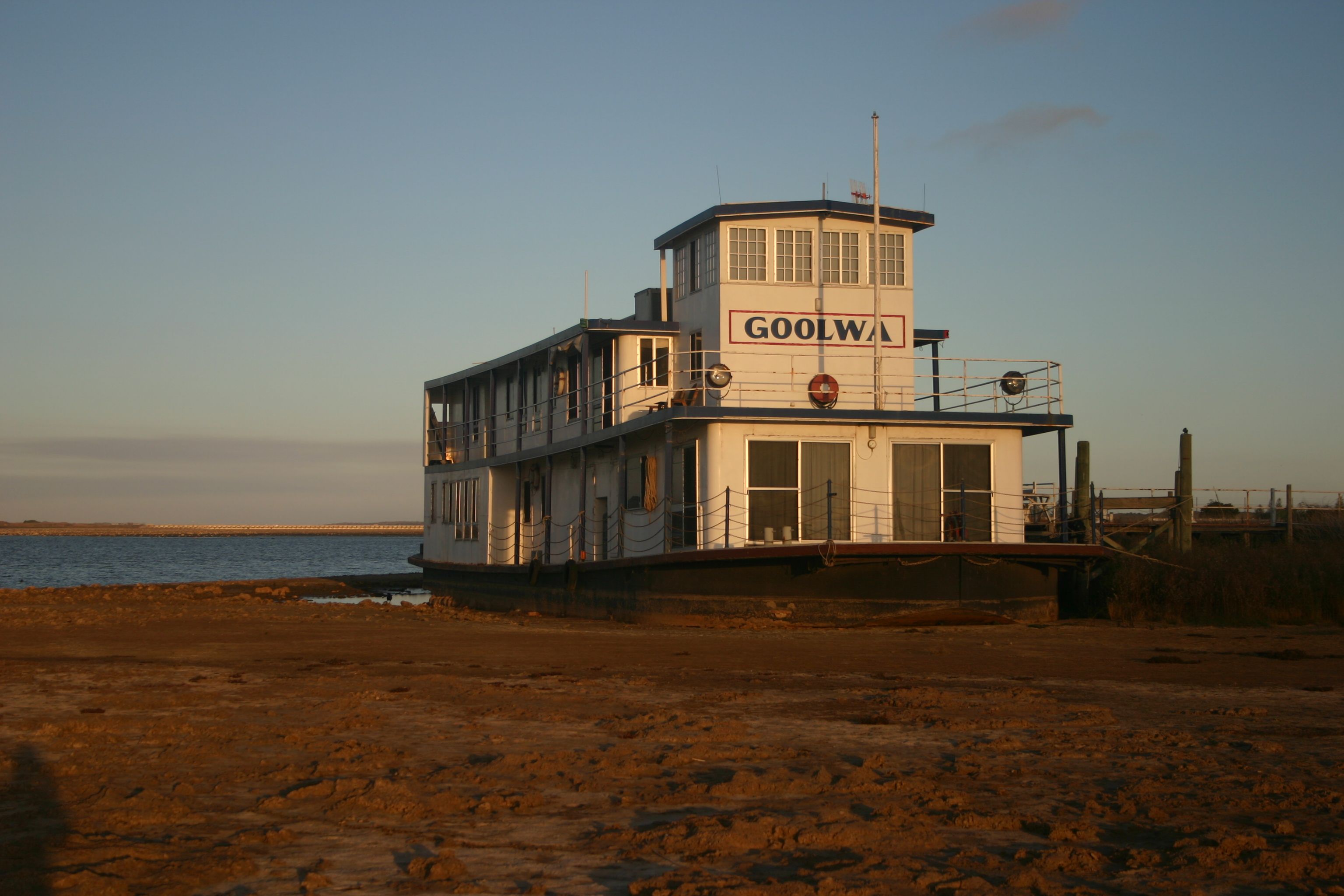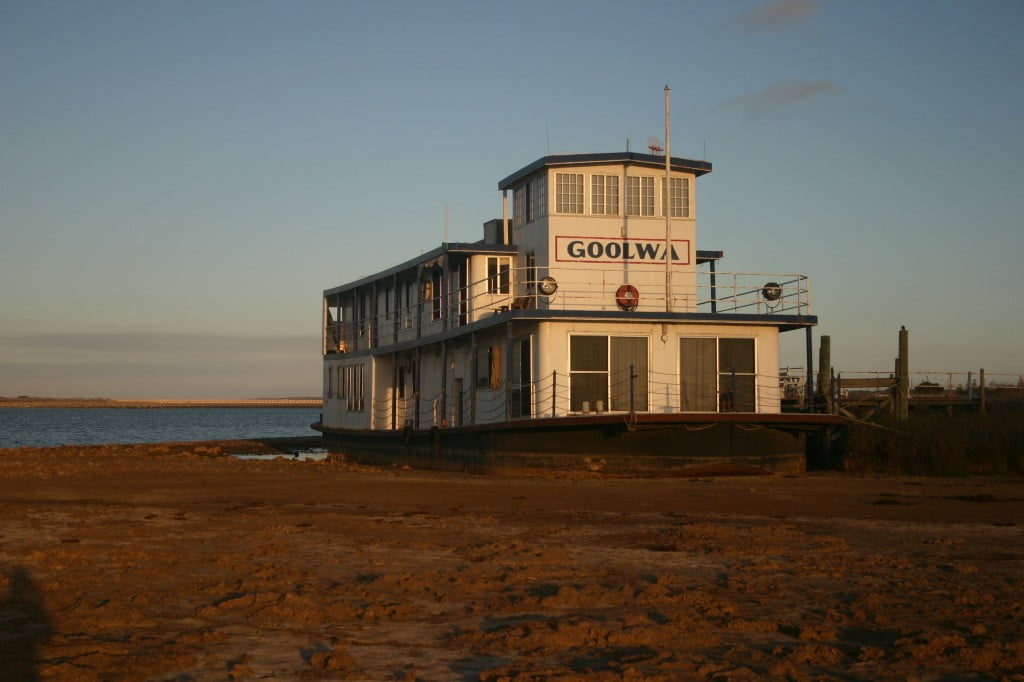IAN Rowan lives on the shores of Lake Alexandrina and he is fed-up with the nonsense from the Murray Darling Basin Authority. In an open letter to the Authority following the recent publication of the ‘2013-2014 Basin Annual Environmental Watering Priorities’ he states:
“If the Murray Darling Basin Authority et al cannot even get recent events correct then how can we rely on them for future predictions and the proper management of the system?”
He has reason to be angry. On page 79 of the document that will set priorities for the distribution of billions of dollars worth of water, the history of water management at the Lower Lakes during the recent prolonged Millennium drought is fabricated.
According to the Murray Darling Basin Authority:
“In an attempt to maintain the water levels in the Lower Lakes above critical acidification levels the barrages were closed from 2007 to 2010. Even with this action, acidification occurred in some of the exposed fringing habitats of the Lower Lakes as the water level dropped well below 0.0m (Australian Height Datum) AHD and much of the lake bed was exposed.”
Mr Rowan writes:
“This statement is clearly nonsense and inconsistent with actual events as the possibility of acidification was only ‘discovered’ 12 months after the barrages were closed.”
Of course the entire problem of acidification and hypersalinisation at the Lower Lakes could have been avoided by simply opening the barrages to the Southern Ocean: by letting the Southern Ocean roll in, by letting the Southern Ocean fill the Lower Lakes.
Yet, the Murray Darling Basin Authority with their Orwellian approach to the truth, suggest that by closing the barrages that lake water levels could be maintained!
In the case of most river systems around the Australian coastline, it is understood that when there is low flow from upstream, the tidal range and salinity limit may extend many kilometres upstream. The tidal limit of the Hawkesbury River, for example, occurs at Yarramundi, which is some 140 km upstream from the river mouth, and the salinity limit occurs around lower Portland, which is 80 km upstream from the river mouth.
But in the case of the Murray there is this idea that freshwater should run all the way to the sea year in and year out. Indeed the South Australian and federal governments, and Labor, Liberal and Greens politicians can not bring themselves to admit that Lake Alexandrina was once the central basin of a wave-dominated barrier estuary.
Only in the context of the River Murray, Australia’s longest and most revered river system, is an estuary, a salinity gradient, a tidal influence denied.
***
To read the entire response by Ian Rowan, which details how the barrages were managed from 2006 through the drought, and for a description of the ongoing impacts of acidification, click here, http://www.mythandthemurray.org/wp-content/uploads/2013/07/Ian-Rowan.pdf
To comment specifically on Mr Rowan’s document click here, http://www.mythandthemurray.org/?attachment_id=1067
The photograph of the boat at Goolwa, high and dry during the recent drought, is courtesy of Susan Myers of www.LakesNeedWater.org . Click on the image for a larger, better view. More information on the Lower Lakes and the barrages can also be found at www.MythandtheMurray.org.



 Jennifer Marohasy BSc PhD is a critical thinker with expertise in the scientific method.
Jennifer Marohasy BSc PhD is a critical thinker with expertise in the scientific method.

. . . fed up with the nonsense. . .
YEP!
Total nonsense.
Sadly . . . as pointed out here. . . it’s not just one side of politics or one govt.
Pretty clear choice Debbie, there is an approaching Federal election. Any one who votes for the parties who are party to this is not only insane they are committing an act of vandalism against their own economy and the river. They are party to it, they confirmed the policy with their vote.
The sheeple will still trudge along and vote for their favourite team though, so we are yelling into the wind. It is signed sealed and delivered with a 10% water bonus 3 weeks ago.By our local members.
In the meantime it appears that the Murray Cray numbers are recovering from the 90% decline last year. So even the toxic black flood last year couldn’t wipe them out. They must have adapted to Aussie conditions , the clever buggers. They might even survive the conservationists, if we can keep some of them away.
Can someone please ‘like’ this on Facebook by clicking the relevant button above… and let me know whether or not the item then showed up in their newsfeed and if so what image was showing. Much thanks in advance… you can email me at jennifermarohasy at yahoo.com.au please, with the result.
Yep. . . gotta agree Ian. . . it was always about politics. . . never about practical!
David Boyd has written an excellent piece at his blog and also posted it at Myth and the Murray. Maybe Jen can link that here (I can’t at the moment as I am away for a few days and I only have my tablet thingy)
Have clicked the ‘like’ Jen.
Ian, it is worth noting the origin of that toxic black flood….water pumped into redgum forests to “preserve” them, becomes anoxic. When the real flood event occurs, this toxic, anoxic water is washed out into the river in a pulse that kills everything….greenies are the real environmental vandals!
Even the iconic alarmist Prof Tim Flannery had some concerns at the height of the recent (far from unusual) drought. Quoting The Australian:
And this from the SMH, before the “never to happen” floods intervened:
” freshwater lakes” If it was a footy game , everyone would be crying foul.
I have an old friend who lives at Milang and he’s determined the lakes should remain fresh.
We have just agreed to disagree.
I clicked on the facebook like button Jen – nothing appeared on my facebook page.
It is remarkable the sheer volume of historical literature available about the Murray.
Just in case this hasn’t been covered before, some excerpts…
Some extracts from the book “The Murray Valley”
(A geographical reconnaissance of the Murray valley and a new design for its regional organisation) Printed 1948.
Author, J. Macdonald Holmes, Ph.D. Professor of Geography, University of Sydney.
Page 86 “…Spreading out below Wellington the river terminates in a series of lakes separated from the ocean by high ridges of dune sands, the five natural openings in which are closed by artificial barrages.
The lower Murray terraces, when used for developed pastures have to be pumped as well as irrigated, especially to remove salt water. The purpose of the barrages is to hold out the salt tidal water and pond the fresh river water back up the river for irrigation, to flush out the salt that comes from seepage springs, and to act as an aid to river navigation and maintain a “pool”.”
Page 185 “…Before 1938, when the barrages at the mouth of the river were completed, the river would flow very slowly out to sea and tidal influence of a few feet was experienced as far up as Murray Bridge and has been recorded by boats as high up as Portee Reach, which is a shallow region where the early steamers needed every inch of water on a low river to get across. In pre-barrage days fresh water was taken by barge from Mannum to the railway town of Tailem Bend.
In 1938 a series of barrages was built to close the lakes against the entrance of salt sea water. These barrages can be opened to allow the occasional flood water of the Murray to get out to sea on a low tidal phase. In a high-rainfall year when there is danger of flooding, the barrages may be opened and the upstream weirs also opened to allow previously ponded-back water to escape and to make room for the water coming down. This is obviously a serious loss of millions of gallons of water, but it has the virtue of removing some silt from inside the locks and, more important still, flushing out the accumulated salts which are characteristic of the Murray, due to seepage in a low phase…”